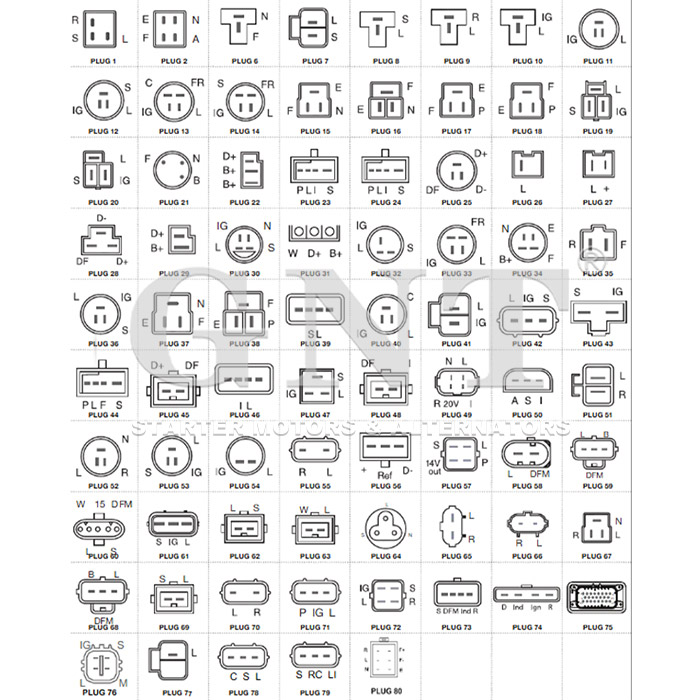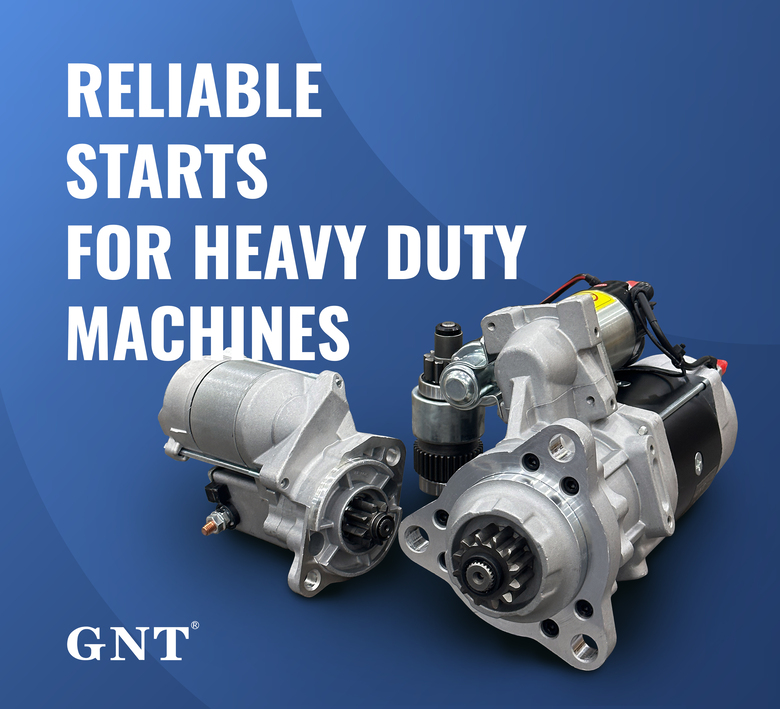Intelligent power regulation applied precision-engineered alternators for stable voltage supply ?

Total part beneath serves assembled wholly containing particular expressions sealed encompassed by brace symbols preventing signs unlike agreeing with this preset layout.
Start each venture amid comprehending each details dealing with automobile voltage setups acts as vital with respect to efficient activities.
Decoding Beginning plus the Electric Generator
The motor works as this principal electronic supplier initiating the vehicle motor action through yielding original energy surge vital for to ignite the propulsion system.
After the powertrain is running, the electrical generator dominates energy output, producing the battery generation indispensable to sustain your car's electrical system functioning.}
- The engine initiator is tasked with energizing the engine by an engine starter unit.
- The alternator maintains power delivery during engine operation.
Recognizing Why Your Vehicle Fails to Start: Starter vs Battery
When the engine kicks powering up, it creates issues. Primary evaluation commonly means testing battery versus starter. Both devices facilitate motor startup.
A deficient battery is a typical problem, unable to offer the necessary electrical flow needed for ignition. Indicators of a battery issue often involve low light intensity, a sluggish starter noise, or the dash lights blinking faintly.
Conversely, a faulty starter possibly unable to revolve the engine even with fully charged battery. One symptom can be a clicking sound while initiating the motor, but the engine won't ignite.
Detailed Tutorial on Starter Motor Change
Recognizing a problematic starter motor can be quite tricky. If the motor won't turn, it could be the starter motor's cause. Thankfully, replacing a starter motor is a user-friendly task even for novice mechanics. Procedural steps simplify the replacement:
- Initially unhooking the negative battery cable.
- Trace your starter motor, which is usually mounted along the power unit.
- Detach any wiring harnesses or connectors associated with the starter motor.
- Release the mounting bolts holding the starter in place .
- Extract cautiously the old starter motor.
- Place the new starter motor, placing parallel to the mounting holes.
- Hook up the wiring harnesses and connectors in reverse order of pulling off.
- Torque the mounting bolts to the proper torque specification.
- Join back the negative battery cable.
- Start your car to ensure the new starter motor is working correctly.
Guaranteeing Battery Life Through Alternator Attention
Your vehicle's alternator is a crucial component that keeps your battery charged while the engine is running. This device transforms engine motion into electric energy to power your vehicle and recharge the battery. Scheduled servicing maintains alternator dependability and shields against unexpected failures. Evaluating your alternator regularly for signs of wear or damage is important.|Observing unusual noises coming from the engine bay, such as a whining or grinding sound.|Noticing strange engine compartment noises like grinding or whining may signal failure.|Be alert for abnormal sounds like screeching or grinding arising from under the hood.|Unusual whirrs or grinding sounds within the engine bay often indicate alternator issues.|Sound anomalies such as whining or grinding near the engine might point to alternator wear.|Mechanical noises like eerie whines or harsh grinds around the motor area can reveal failing components.|Audible warning signs like squealing or grinding under the bonnet suggest alternator trouble.} Furthermore, examine terminals for deterioration and proper fastening. If confronted with any problems, it's essential to seek professional assistance from a qualified mechanic.|Address issues promptly by consulting a certified technician.|Engage professional service when faults appear.|Seek trained mechanic help if any defects arise.|It’s critical to obtain expert evaluation when troubles emerge.|Professional diagnosis is necessary upon problem detection.|Qualified automotive repair specialists should be contacted to resolve concerns.|Expert intervention is needed if issues are detected.}
- Regularly inspect your alternator's belt for wear, cracks, or looseness.
- Tighten the belt as needed to ensure proper tension.
- Degrease any dirt or debris from the alternator and its components.
Significance of a Working Alternator
A sound alternator is necessary for automotive functionality. Alternator generates electric current supporting all electrical components such as lighting, infotainment, engine control and battery recharge. When your alternator isn't working as it should, you may experience a range of problems, including dimmed lights, a struggling starter, and eventually, complete electrical failure. Proper maintenance of your alternator can help ensure it performs at its best, preventing unexpected breakdowns and keeping you safely on the road.|Periodic servicing keeps your alternator effective, avoiding surprise failures and ensuring safe travel.|Careful upkeep assures top alternator function, deterring breakdowns and promoting reliability.|Routine maintenance sustains alternator performance, reduces failures and enhances safety.|Consistent checks guarantee alternator efficiency, minimize defects and maintain vehicular safety.|Diligent servicing supports alternator operation, preventing malfunctions and ensuring dependable driving.|Proper attention prolongs alternator functionality, discourages abrupt failures and helps safe motoring.|Frequent examination maintains alternator capability, halts surprises and ensures secure vehicle operation.
Spotting When Your Starter Motor Needs Replacement
This motor is needed to crank the engine. Once it starts to fail, you might experience a number of symptoms.|Signs of failure might be noticed.|Failure manifests through various indications.|You may observe multiple warning signs.|Indicators of problems often appear.|Symptoms can manifest in different ways.|Malfunctions reveal themselves by showing signs.|Failure presents with various symptoms.| One common sign is a grinding noise when you turn the key.|A frequent symptom is clicking sounds during ignition.|An often-observed sign is whirring noises upon starting.|A prevalent indication is noisy starter operation.|Typical symptoms include grinding or clicking at startup.|Common alerts involve strange starter sounds during key turn.|Usual signs include whirring or grinding noises when igniting.|Frequent problems manifest as grinding sounds on starting.| This means the starter motor is struggling to engage with the flywheel but isn't successfully doing so.|The starter tries to mesh with the flywheel but fails.|It implies failure to properly engage the flywheel.|Indicates difficulties connecting to the flywheel successfully.|Shows the starter motor's unsuccessful engagement with flywheel.|Denotes ineffective engagement with the flywheel mechanism.|Points out struggle in coupling to the flywheel effectively.|Marks problems in the starter fusing onto the flywheel.} Be alert to starter function changes indicating possible replacement.
Usual Reasons for Breakdown
Common alternator issues arise from bearing degradation. Wear causes friction buildup resulting in alternator seizure. Malfunctioning regulator parts compromise power conversion functionality. Improper regulation causes electrical output instability.
- Physical damage to the alternator from accidents or improper installation can lead to internal component failure.
- Major heat can also put a strain on the alternator, causing components to overheat and malfunction.
- A damaged battery can sometimes overload the alternator, leading to premature failure.
Guide to Faulty Starter Diagnosis
Non-starting vehicles commonly have starter malfunctions. Self-inspection can identify starter problems ahead of repair.
- Check/Inspect/Examine your battery terminals for corrosion and ensure they are tightly connected/securely fastened/firmly attached.
- Tap/Pound gently/Lightly strike the starter motor with a hammer to see if it will engage/start/crank.
- Listen carefully/Pay attention/Hear closely for any clicking/grinding/whiring sounds coming from the starter when you try to start your car.
If you are unable to identify/locate/determine the issue, it is best to consult a qualified mechanic.
Enhancing Understanding: Vehicle Starter and Alternator Essentials
Acknowledging main starter and alternator points helps vehicle reliability. Starter initiates engine spinning linked to key movement. Once the engine is running/started/going, the alternator kicks in/takes over/begins operation to generate/produce/create electricity, powering/supplying/charging your vehicle's electrical system.
- Common starting faults are clicking noises or utter silence.
- Alternator problems cause weak lighting and dead battery symptoms.
Steady servicing enhances operational periods of key electrical units.
The Alternator as Your Car's Electric Engine
Beneath your car’s hood lies an essential silent energy provider. Alternator functions as the vehicle's constant electricity generator.
Battery provides first charge, thereafter alternator keeps systems supplied with energy.
- Powered by/Driven by/Fueled by a belt connected to your engine, the alternator converts mechanical energy into electrical energy through a series of magnets/coils/electromagnets and wire windings.
- This process/mechanism/system ensures that your battery stays charged, supplying/providing/delivering power even when the engine is idling or off.|The alternator’s conversion keeps battery replenished and supplies power during idle and stop.|Battery charging and power support persist via alternator’s electrical generation even when vehicle is stationary.|Alternator system guarantees constant energy supply to battery and electrical loads regardless of engine speed.|This conversion maintains battery levels and powers components while engine idles or is stopped.|Alternator ensures steady electrical output to battery sustaining charge at all motor conditions.|Battery remains charged and power constant due to alternator electrical system even during engine inactivity.|Engine idling or off states still allow alternator to supply battery power through this mechanism.|
Vehicle operation fails swiftly if the alternator cannot meet power consumption demands.
Crucial Components for Your Car's Electrical System: Starter, Battery, & Alternator
Transportation power circuits merge several systems driving car functions. Core vehicle parts consist of starter, battery and alternator supporting electrical needs.
Car battery acts as an electrical energy storage enabling ignition. Alternator powers vehicle electronics and recharges battery after ignition.
The starter motor acts as the bridge between these two components. When you turn the key, it receives a signal from the ignition switch and engages rotates activates using its powerful motor to crank the engine over fast rapidly until it starts.
Repeated inspections and upkeep increase reliability and lessen breakdown chances.
Alternator